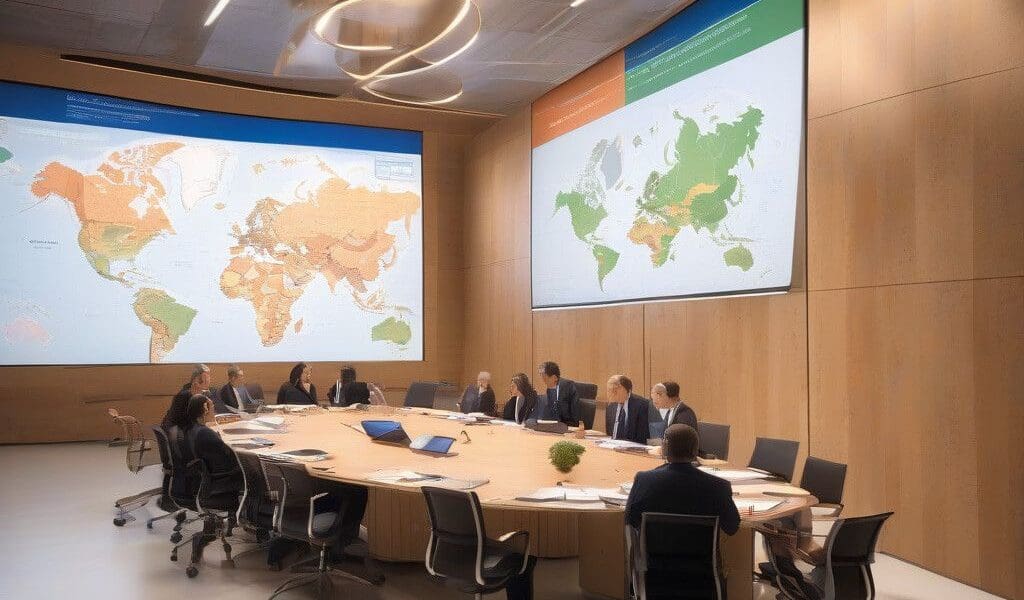Advancing Connectivity: The Great Sea Interconnector Project
In a significant move towards enhancing energy security and promoting sustainable development, Cyprus and Greece are actively engaging in discussions focused on the Great Sea Interconnector. This ambitious project aims to establish a high-speed electric cable network that will link Europe and the Middle East, traversing the Mediterranean seabed and providing a reliable source of power to the region.
The Great Sea Interconnector is set to span an impressive 1,240 kilometers, making it the longest and deepest high-voltage direct current (HVDC) cable globally. The network will reach depths of around 3,000 meters, ensuring the connection of transmission networks from Greece via Crete and Cyprus to Israel. With an estimated total cost of €2.4 billion, the project reflects a significant investment in regional infrastructure, with €1.9 billion allocated specifically for the section spanning Cyprus.
While the benefits of the interconnector are evident—facilitating energy transfers and promoting stability in supply—challenges remain on the geopolitical front. The project has garnered the attention of the European Union, which has expressed a willingness to support the initiative financially. However, discussions are complicated by overlapping jurisdictional claims in the Mediterranean, which involve Greece, Cyprus, and Turkey. These tensions could potentially impede progress and complicate execution schedules.
Cyprus, in particular, is seeking clarity on its financial commitments and potential risks associated with the project. The geopolitical landscape, especially Turkey’s stance—marked by skepticism regarding Cyprus’s operational capacity—poses a risk of delays and surging costs. Deputy government spokesperson Yiannis Antoniou has indicated that discussions have progressed, and key issues may be tabled in forthcoming cabinet meetings to address these concerns.
Collaboration between national leaders is essential in overcoming these hurdles. A meeting between Cypriot President Nikos Christodoulides and Greek Prime Minister Kyriakos Mitsotakis is scheduled to take place in Athens. The dialogue is expected to center on how to address any geopolitical challenges while charting a clear path forward for the interconnector’s development.
This initiative will not only serve as a crucial energy lifeline but also play a pivotal role in the transition toward greener energy solutions. Renewable energy systems across Europe are increasingly seeking interconnectedness. For instance, integrating solar and wind energy that is generated in the Middle East with European networks could enhance the efficiency of energy distribution, leading to reduced carbon footprints.
The Great Sea Interconnector exemplifies such an ambition, leveraging the natural strengths of both regions to foster a more interconnected and sustainable energy future. If successfully executed, it could pave the way for further cross-border projects that prioritize resilience and sustainability in the face of climate change.
As the project progresses, monitoring geopolitical relations, particularly concerning Turkish interests in the region, will remain crucial. Potential disputes over territorial waters and energy resources could impact timelines and financial feasibility. Thus, governments must balance diplomatic negotiations with forward-thinking energy policies to ensure that the interconnector not only becomes a reality but is also sustainable.
In conclusion, the Great Sea Interconnector stands as a landmark project capable of transforming energy landscapes in Europe and the Middle East. It embodies a strategic approach to regional cooperation, sustainable development, and energy security. By solidifying agreements and addressing jurisdictional complexities, nations can harness the benefits of this project for generations to come. The focus now must be on fostering dialogue and diplomacy to navigate the intricacies of this ambitious plan.








